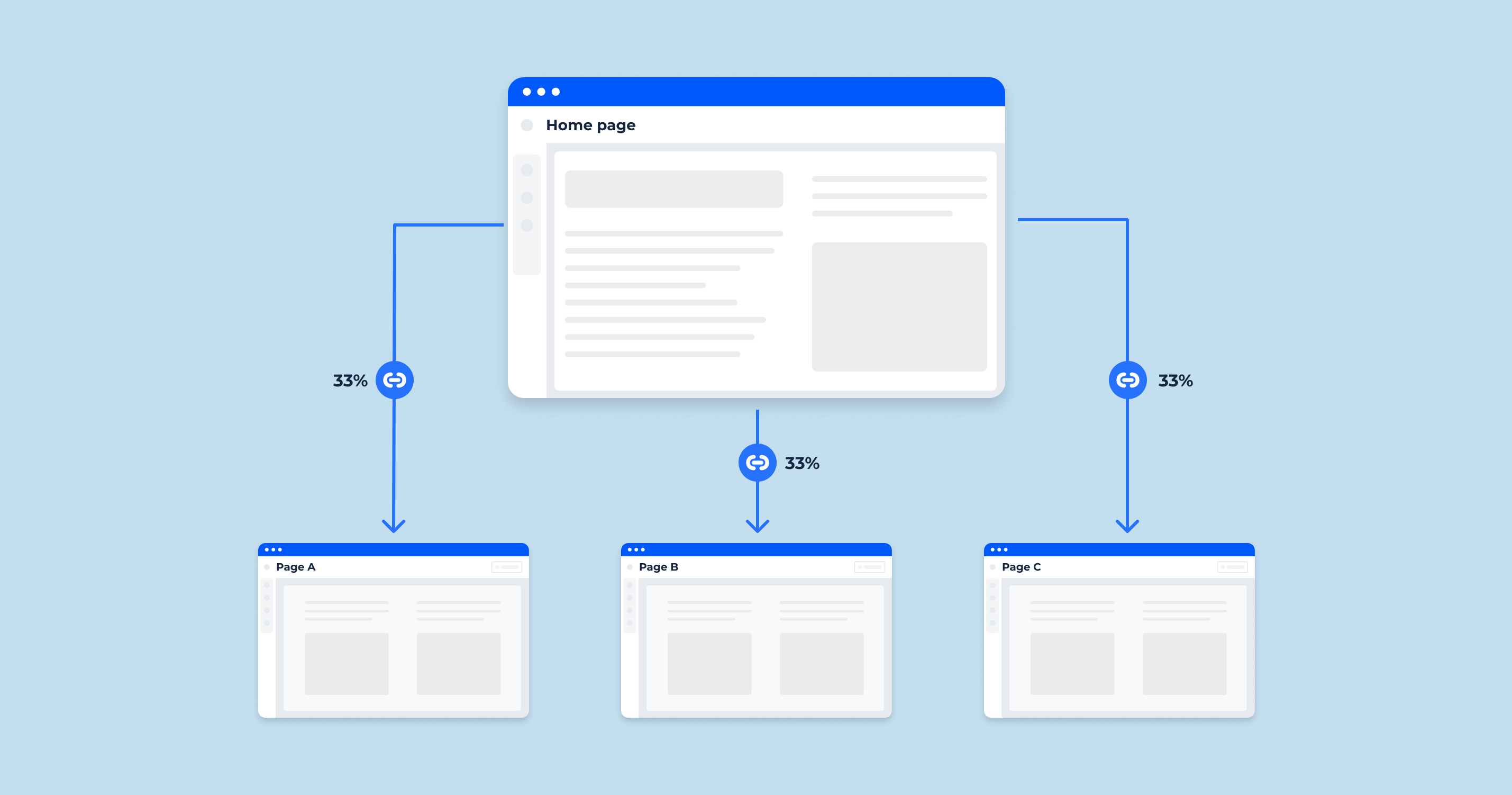Link Juice Meaning and Definition
Link juice is a term used in the context of search engine optimization (SEO) to describe the value or equity that is passed from one web page to another through hyperlinks. When a webpage links to another webpage, it is essentially “voting” for or endorsing the content on the linked page. This helps search engines like Google understand the importance and relevance of the linked page in relation to the linking page.
The concept of juice link is based on the idea that links from high-quality and authoritative websites carry more weight and therefore pass more value, to the pages they connect to. In turn, this can help improve the page’s search engine rankings. Factors such as the number of connections pointing to a page, the quality of the sites, and the relevance of the content on both pages can all impact the amount of value that is passed.
Keep in mind that the term SEO link juice is not an official term used by search engines, but rather an industry term coined by SEO professionals to help describe this concept.
Link Juice’s Role in SEO
Search engines like Google consider several factors when evaluating link juice. Among these factors are the authority of the page, the relevance of linked content, and the number of inbound connections. This evaluation helps search engines determine the credibility and value of a website, ultimately affecting its ranking in search engine results pages (SERPs).
Search engines like Google use complex algorithms to evaluate and assign value, taking into account various factors that contribute to the concept.
It’s important to remember that search engine algorithms are continuously evolving, and these factors may change over time. The best practice for link juice SEO is to focus on creating high-quality, relevant content and building genuine, natural connections with other websites in your industry or niche.
Internal links connect different pages within the same domain, helping distribute authority throughout the site. External links, on the other hand, point to pages on other domains. Receiving high-quality ones can boost a site’s authority, improving its search engine rankings.
Link Juice Distribution
Distribution works by allocating the value or equity from incoming and internal links across the pages of a website. The goal is to optimize the flow of link juice throughout the site, which can improve search engine rankings and visibility.
Here’s an overview of how distribution works:
| Incoming links | When a website receives a link from an external source, the linking page passes a portion of its value to the linked page. The amount of juice passed depends on factors like the authority of the page, relevance of the content, and the nature of it ( DoFollow or NoFollow ). |
| Internal linking | Webmasters create an internal structure that connects related pages within their website. This structure helps distribute the value received from external sources and generated by the site’s own content across various pages. A strong internal structure ensures that the most important pages receive the highest share of value. |
| Site hierarchy | A well-organized website with a clear hierarchy of categories, subcategories, and individual pages helps direct the flow from higher-level pages to lower-level pages. This ensures a more balanced distribution throughout the site. |
| Prioritization | By prioritizing key pages and linking them prominently from other pages, webmasters can concentrate value on their most important content. This can boost the search engine rankings of those pages and increase overall site visibility. |
| Link quality | Ensuring that the website receives high-quality, relevant backlinks from authoritative sources increases the overall authority of the site. Focusing on acquiring these can help distribute juice more effectively across the site. |
| Content quality and relevance | The relevance and quality of the content on both the linking and linked pages can impact the amount of value passed. By creating high-quality, contextually related content, webmasters can optimize the flow throughout their site. |
As a result, this distribution helps search engines understand the importance and relevance of web pages, directly influencing search engine rankings and the overall performance of the website.
Common Issues and Solutions for Best Optimize Link Juice Distribution on Your Website
Low-quality or spammy backlinks
Connections from low-quality, spammy, or unrelated websites can negatively affect your website’s SEO, as they pass minimal or even harmful value. It’s essential to monitor and, if necessary, disavow these to maintain your site’s credibility.
Solution: Regularly monitor your backlink profile and disavow low-quality, spammy, or unrelated links to maintain your site’s credibility and avoid negative SEO impact.
Broken links
Broken or dead URLs can cause value to be wasted or “leak,” negatively impacting your site’s SEO. Regularly checking for and fixing broken URLs can help preserve and properly distribute authority.
Solution: Conduct periodic audits to identify and fix broken or dead URLs on your website, ensuring that value is preserved and properly distributed.
Over-optimization of anchor text
Using overly optimized, keyword-stuffed anchor text can make your links appear unnatural, potentially leading to search engine penalties. It’s essential to use natural, relevant anchor text.
Solution: Use natural, relevant anchor text when connecting to other pages, avoiding keyword-stuffed or overly optimized anchors that can lead to search engine penalties.
Excessive linking
Having too many outbound links on a single page can dilute the value passed to each page. Focus on creating a balanced, relevant structure that prioritizes high-quality connections.
Solution: Create a balanced and relevant structure by focusing on high-quality connections and avoiding too many outbound URLs on a single page, which can dilute the value.
NoFollow vs. DoFollow confusion
Using the NoFollow attribute when it’s not needed or failing to use it when appropriate can negatively impact distribution. It’s crucial to understand when to use each attribute and apply them correctly.
Solution: Understand when to use each attribute and apply them correctly. Use NoFollow for sponsored, user-generated content, or links in comments, and DoFollow for organic, high-quality connections.
Poor internal linking
An inadequate internal structure can result in inefficient distribution across your website. Optimizing your site’s internal structure can help ensure that it is effectively distributed to your most important pages.
Solution: Optimize your site’s internal structure by connecting related content and ensuring that value is effectively distributed to your most important pages.
Duplicate content
Duplicate content can lead to the splitting between multiple versions of the same page, reducing the overall value of each page. Use canonical tags to indicate the preferred version of the page and consolidate it.
Solution: Implement canonical tags to indicate the preferred version of a page, consolidating and avoiding the splitting of value between multiple versions of the same content.
Link juice hoarding
Some webmasters may attempt to “hoard” juice by not connecting out to other websites. This approach is not only counterproductive but also negatively impacts user experience and may harm your site’s SEO in the long run.
Solution: Focus on providing value to your users by connecting out to high-quality, relevant resources, which can improve user experience and benefit your site’s overall SEO in the long run.
By understanding these factors, you can better optimize your site’s building strategy to maximize the value you receive and improve your site’s search engine rankings.
Optimizing Link juice with SiteChecker
Proper distribution with Internal Link Checker
Optimize link juice distribution, build internal linking structures, and identify and resolve references issues
Proper distribution and management of this value is essential for improving a site’s position in search engine rankings. Tools like Internal Link Checker provide invaluable assistance in this endeavor.
By giving a detailed overview of a website’s internal links, SiteChecker allows webmasters to spot underlinked pages, offering a chance to boost their authority and ranking potential. This oversight also ensures against over-optimization, where excessive use of exact match anchor text or repetitive linking can be perceived as manipulative by search engines, potentially leading to penalties.
Moreover, SiteChecker can quickly identify broken internal links, which can otherwise waste the valuable link juice.
Conclusion
Link juice plays a critical role in SEO by influencing search ranking and authority. Understanding the concept and optimizing its distribution across a website can greatly enhance a site’s performance in search engine results. By focusing on high-quality content, strong internal structure, and acquiring relevant backlinks, you can effectively improve your website’s visibility, search engine rankings, and overall user experience.









